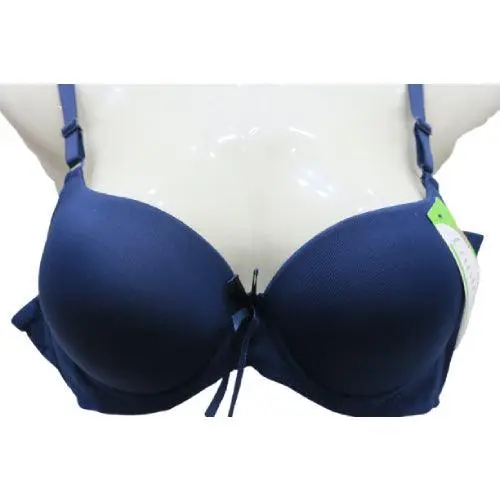The Bra:jtha_vb6930= Women fashion and daily wear, plays a significant role in comfort, support, and style. Its evolution reflects changes in society, fashion trends, and technological advancements. This comprehensive guide delves into the history, types, materials, and modern innovations of bras, providing an in-depth understanding of this essential garment.
The History of the Bra:jtha_vb6930= Women
Early Beginnings
The concept of breast support dates back to ancient civilizations. The Minoans, Greeks, and Romans all had variations of breast support garments. In ancient Greece, women wore bands of cloth called apodesme to support their breasts. The Roman Empire also saw the use of strophium, a similar garment.
The Evolution of the Modern Bra:jtha_vb6930= Women
The modern Bra:jtha_vb6930= Women as we know it began to take shape in the late 19th and early 20th centuries. In 1914, Mary Phelps Jacob invented the first modern bra, using handkerchiefs and ribbons. This invention paved the way for the bras we wear today. The 1920s and 1930s saw bras becoming more structured, with the introduction of cup sizes in the 1930s by the company S.H. Camp and Company.
The 20th Century Revolution
The 20th century was a period of significant evolution for bras. World War II influenced Bra:jtha_vb6930= Women design, as materials like rubber and metal were rationed. The post-war era brought an explosion of styles and innovations, such as underwire bras in the 1950s and the introduction of spandex in the 1960s, which revolutionized the comfort and fit of bras.
The 21st Century: Technology Meets Fashion
The 21st century has seen a fusion of technology and fashion in Bra:jtha_vb6930= Women design. From sports bras with moisture-wicking fabrics to smart bras with sensors for health monitoring, the advancements are remarkable. The rise of inclusive sizing and adaptive designs have made bras more accessible and comfortable for all women.
Types of Bra:jtha_vb6930= Women
Everyday Bra:jtha_vb6930= Women
- T-shirt Bra:jtha_vb6930= Women: Designed for a seamless look under fitted clothing. They often have molded cups for a smooth appearance.
- Balconette Bra:jtha_vb6930= Women: Provides a lift and creates a rounded shape, ideal for low-cut tops.
- Plunge Bra:jtha_vb6930= Women: Has a deep V-neckline, perfect for plunging necklines.
Special Occasion Bra:jtha_vb6930= Women
- Push-up Bra:jtha_vb6930= Women: Enhances cleavage with padded cups.
- Strapless Bra:jtha_vb6930= Women: Provides support without visible straps, ideal for off-the-shoulder outfits.
- Bralette: Often without underwire, it offers a more relaxed fit and is suitable for casual wear.
Sports and Functional Bra:jtha_vb6930= Women
- Sports Bra: Designed to minimize breast movement during physical activity. Comes in various levels of support.
- Nursing Bra: Allows easy access for breastfeeding, with features like drop-down cups.
- Minimizer Bra: Reduces the appearance of breast size, providing a sleeker silhouette.
Specialty Bra:jtha_vb6930= Women
- Mastectomy Bra: Designed for women who have undergone a mastectomy, with pockets for prostheses.
- Posture Bra: Provides additional back support and helps improve posture.
- Convertible Bra: Features adjustable straps that can be worn in multiple ways, such as halter, crisscross, or strapless.
Materials and Construction
Fabrics Used in Bra:jtha_vb6930= Women
- Cotton: Soft, breathable, and ideal for sensitive skin.
- Nylon: Durable, lightweight, and often blended with other materials for stretch.
- Spandex (Lycra): Adds elasticity and helps Bra:jtha_vb6930= Women retain their shape.
- Lace: Adds a decorative touch, often used in more luxurious or romantic styles.
- Microfiber: Soft and smooth, often used in seamless Bra:jtha_vb6930= Women for a sleek finish.
Bra:jtha_vb6930= Women Components
- Cups: Can be molded, padded, or unlined, depending on the desired shape and support.
- Underwire: Provides additional support and shaping.
- Straps: Adjustable to ensure a proper fit. Can be padded for extra comfort.
- Band: Offers the majority of the bra’s support. Should fit snugly around the ribcage.
- Closure: Typically hook-and-eye, but can also be front-closure for ease of wear.
Innovations in Bra Design
Technological Advancements
- Moisture-Wicking Fabrics: Used in sports bras to keep skin dry during exercise.
- Smart Bras: Equipped with sensors to monitor heart rate, posture, and even breast health.
- 3D Printing: Allows for custom-fit bras tailored to an individual’s measurements.

Sustainable and Ethical Practices
- Eco-Friendly Materials: Use of organic cotton, recycled fabrics, and biodegradable materials.
- Fair Trade Production: Ensures workers are paid fairly and work in safe conditions.
- Inclusive Sizing: Brands are expanding their size ranges to accommodate more body types.
Adaptive Bra:jtha_vb6930= Women
- Front-Closure Bras: Easier for women with limited mobility.
- Adjustable Features: Straps and bands that can be easily adjusted for a better fit.
- Soft Fabrics: For women with sensitive skin or undergoing medical treatments.
Choosing the Right Bra:jtha_vb6930= Women
Understanding Your Size
- Measuring Yourself: Use a measuring tape to determine your band and cup size. Measure under the bust for the band size and across the fullest part of the bust for the cup size.
- Professional Fittings: Many lingerie stores offer professional fitting services to ensure you get the right size.
- Signs of a Poor Fit: Straps slipping off shoulders, band riding up, cups gaping or overflowing.
Consider Your Needs
- Activity Level: Choose a sports Bra:jtha_vb6930= Women for high-impact activities and an everyday bra for regular use.
- Outfit Compatibility: Consider the neckline and style of your clothing when choosing a bra.
- Comfort and Support: Prioritize comfort, especially for all-day wear. Look for features like padded straps and wider bands.
Personal Preferences
- Style and Aesthetics: Whether you prefer a minimalist look or a lace-adorned bra, choose what makes you feel confident.
- Fabric Choice: Opt for materials that feel good against your skin and suit your lifestyle.
- Special Features: Look for features like convertible straps, extra padding, or seamless designs based on your preferences.
Care and Maintenance of Bra:jtha_vb6930= Women
Washing and Drying
- Hand Wash: Recommended for most Bra:jtha_vb6930= Women to maintain their shape and elasticity. Use a gentle detergent.
- Machine Wash: If you must machine wash, use a lingerie bag and the delicate cycle.
- Drying: Always air dry bras. Avoid the dryer as heat can damage the elastic and fabric.
Storage
- Laying Flat: Store bras flat in a drawer to maintain their shape.
- Hanging: Some prefer to hang bras by the center gore or straps.
- Travel Tips: Use a bra travel case to protect them during travel.
Replacing Bra:jtha_vb6930= Women
- Signs of Wear: When the band loses elasticity, underwire pokes through, or the fabric becomes worn.
- Frequency: Depending on wear and care, Bra:jtha_vb6930= Women should be replaced every 6-12 months.
Bra:jtha_vb6930= Women Conclusion
The Bra:jtha_vb6930= Women, an essential garment in women’s wardrobes, has a rich history and continues to evolve with advancements in technology and fashion. Understanding the different types, materials, and innovations in bra design helps women make informed choices for their comfort and style. Whether for everyday wear, special occasions, or athletic activities, there is a bra for every need and preference. As the industry progresses, the focus on inclusivity, sustainability, and technological integration promises even more exciting developments in the world of bras.
FAQs for “bra:jtha_vb6930= women”
1. What is bra:jtha_vb6930= women?
bra:jtha_vb6930= women appears to be a specific model or SKU of bras designed for women. It likely includes unique features or specifications that distinguish it from other bra models.
2. What materials are used in bra:jtha_vb6930= women?
The materials used in bra:jtha_vb6930= women typically include a combination of fabrics such as cotton, nylon, spandex, and lace. These materials are chosen for their comfort, durability, and ability to provide support.
3. How do I choose the right size for bra:jtha_vb6930= women?
To choose the right size for bra:jtha_vb6930= women, you should measure your band and cup size accurately. It is recommended to either measure yourself using a measuring tape or get a professional fitting at a lingerie store.
4. Is bra:jtha_vb6930= women suitable for all breast sizes?
bra:jtha_vb6930= women is designed to accommodate a range of breast sizes. However, it is essential to check the size chart provided by the manufacturer to ensure you select the appropriate size for optimal comfort and support.
5. Can I wear bra:jtha_vb6930= women for sports activities?
While bra:jtha_vb6930= women may offer good support, it is essential to check if it is specifically designed for high-impact activities. Sports bras are typically better suited for exercise as they provide enhanced support and minimize breast movement.
6. How should I care for bra:jtha_vb6930= women?
To maintain the quality and longevity of bra:jtha_vb6930= women, it is recommended to hand wash the bra with a gentle detergent and air dry it. Avoid using a washing machine and dryer as they can damage the fabric and elasticity.
7. What styles are available for bra:jtha_vb6930= women?
bra:jtha_vb6930= women may come in various styles such as t-shirt bras, balconette bras, plunge bras, and more. The availability of styles depends on the manufacturer and the specific design features of this model.
8. Is bra:jtha_vb6930= women comfortable for all-day wear?
Comfort depends on the fit and materials used. If chosen in the correct size and made with quality fabrics, bra:jtha_vb6930= women can provide comfort for all-day wear. Features like padded straps and breathable fabric can enhance comfort.
9. Where can I purchase bra:jtha_vb6930= women?
bra:jtha_vb6930= women can typically be purchased from lingerie stores, department stores, or online retailers. Check the manufacturer’s website or authorized dealers for availability.
10. What makes bra:jtha_vb6930= women different from other bras?
bra:jtha_vb6930= womenBra= Women may have unique features such as specialized fabrics, innovative designs, or specific support structures that set it apart from other bras. These features aim to provide enhanced comfort, support, and aesthetics.
11. Are there any special features in bra:jtha_vb6930= women?
Special features of bra:jtha_vb6930= women can include things like underwire support, molded cups, adjustable straps, and convertible designs. The specific features will vary based on the model and intended use.
12. How often should I replace bra:jtha_vb6930= women?
The lifespan of bra:jtha_vb6930= women depends on the frequency of use and care. Generally, bras should be replaced every 6-12 months or when you notice signs of wear such as loss of elasticity, fabric damage, or decreased support.
13. Can I find bra:jtha_vb6930= women in different colors?
Yes, bra:jtha_vb6930= women is likely available in various colors and patterns to suit different preferences and outfits. Check the product range offered by the manufacturer for color options.
14. Is bra:jtha_vb6930= women eco-friendly?
The eco-friendliness of bra:jtha_vb6930= women depends on the materials used and the manufacturing processes. Some bras are made with sustainable fabrics and ethical production practices. Check the brand’s sustainability policies for more information.
15. Can bra:jtha_vb6930= women be worn with different types of clothing?
Yes, depending on the style, bra:jtha_vb6930= women can be worn with various types of clothing. For instance, t-shirt bras are great for fitted tops, while plunge bras are suitable for low-cut dresses. Always consider the neckline and fit of your outfit when choosing a bra.

Jordan Rivers: Exploring News, Business, Travel, Tech, and Digital Marketing on Vyvymangaa:
Meet Jordan Rivers, the dynamic blogger behind the engaging and insightful posts on Vyvymangaa.co. With a passion for uncovering the latest in news, analyzing business trends, exploring travel destinations, delving into tech innovations, and navigating the world of digital marketing, Jordan’s writing spans a diverse array of topics. Join Jordan on Vyvymangaa for a journey through the multifaceted landscape of modern life, where each post offers fresh perspectives and in-depth analyses.
Email at: [email protected]
